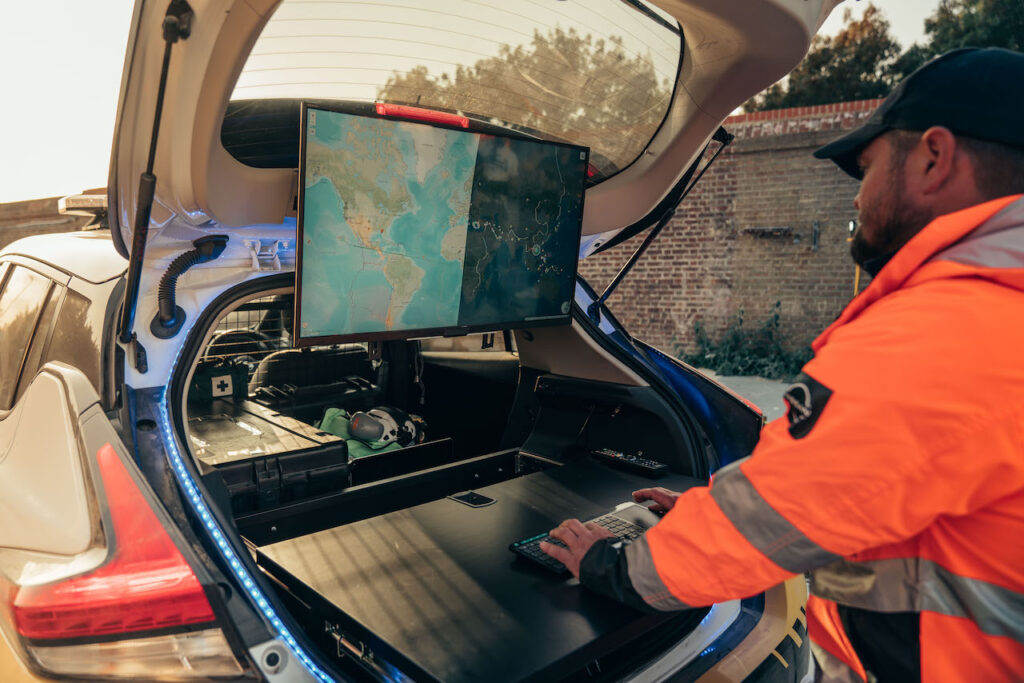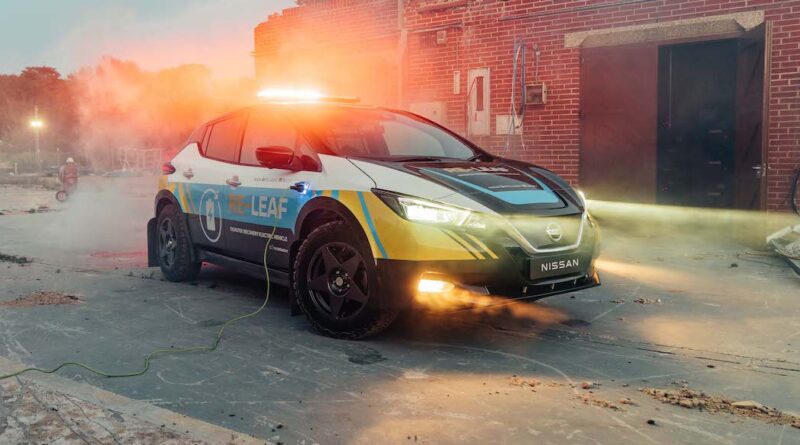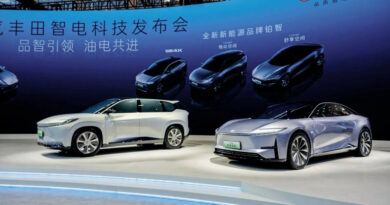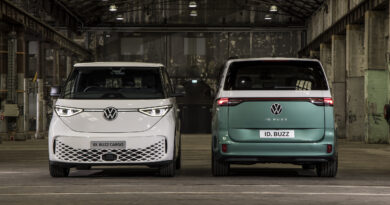Nissan wants to provide emergency RE-LEAF with jacked-up disaster-support vehicle
Nissan has revealed a high-riding concept car based on its Leaf EV that’s designed to get to hard-to-reach places (or places that are too hard for the regular small hatchback, at least), where it can act as a power source following natural disasters.
Cleverly named the RE-LEAF (geddit?), the prototype rides on 17-inch wheels wrapped in all-terrain rubber, and provides 225mm of ground clearance – up from the 155mm offered by the regular Leaf.
Key changes include the addition of external, weatherproof plug sockets mounted at the rear of the vehicle, which mean you can plug devices straight into the Leaf’s on-board battery like you would any other power source.

The RE-LEAF’s colour scheme is no accident, with “electron” being the ancient Greek word for “amber”, while a sump guard, wider tracks, mud flaps and the increased ride height all aid in making the prototype a little tougher off-road.
Inside, the rear seats have been stripped out and the floor levelled to increase storage, while a pull-out desk and 32-inch LED screen mean the RE-LEAF can be used as a tiny operations centre.

The idea behind the RE-LEAF is to allow emergency services to run things like medical gear, communication equipment or external lighting in the event of a power outage.
According to the brand’s research, weather and natural disaster events account for between 37 and 44 per cent of power outages in Europe and the USA, with the average blackout lasting between 24 and 48 hours.
And it’s in this period that the RE-LEAF can offer some, well, relief. According to the brand, the 62 kWh battery in the Leaf e+ can run an average household for six days. The battery in this rescue prototype, however, is designed to run emergency equipment (think jack hammers, ventilators or flood lights) while the mains power is restored.
The concepts plays to the regular Leaf’s ability to provide Vehicle-to-Grid (V2G) power, or bi-directional charging, meaning owners can essentially choose to use their homes to power their vehicle, or their vehicle to power their homes. The functionality is currently being trialled in Australia.
“Electric vehicles are emerging as one of the technologies that can improve resilience in the power sector. By having thousands of EVs available on standby, either as disaster-support vehicles or plugged into the network, they’re uniquely capable of creating a virtual power plant to maintain a supply of energy during a major outage,” says Helen Perry, Nissan Europe’s Head of Electric Passenger Cars & Infrastructure.




